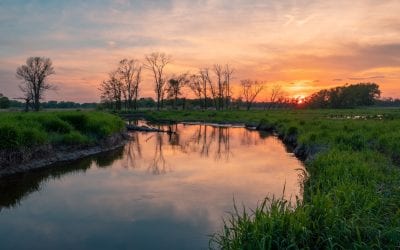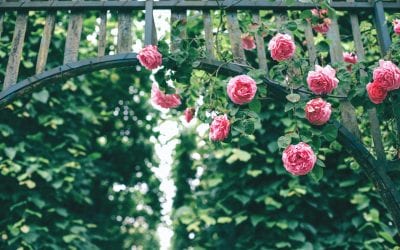RAIN GARDENS
Rain gardens are a great way to reduce your contribution to storm water runoff and beautify your yard! A rain garden is an area designed to capture and hold rain water that would otherwise run into your ditch or coulee and eventually end up in the bayou, bringing pesticides, fertilizers, and other pollutants with it. Water captured in a rain garden is absorbed into the ground where it either recharges the ground water supply or is utilized by plants and returned to the atmosphere through transpiration. Water can be directed to a rain garden or the garden can be placed in an area that already receives water flow.
Having the right soil is the most important aspect of a rain garden. The soil should hold water after a heavy rain for no longer than an hour before it is absorbed. If your soil has too much clay, you will need to replace it with a rain garden mix (approximately 50% sand, 30% topsoil, and 20% organic material). If your soil has high clay content (characterized by having poor drainage), you may consider adding a drainage system to prevent it from becoming waterlogged.
The other component of a rain garden is the berm, which is put into place to retain the water in a rain garden. A berm is similar to a levee and should reach the highest elevation of the rain garden. With the berm working to retain the water, the soil working to absorb the water, and the plants working to filter and transpire the water, a rain garden is a functioning system that can help to improve the water quality and overall health of our entire watershed.
WETLAND PLANTS ARE PART OF A LARGER PICTURE
Every time it rains, the water that lands in your yard has to go somewhere. Some of it either soaks into the ground or evaporates, but during a heavy rain most of that water will become “surface runoff.” Surface runoff water will flow across your yard, into ditches and coulees eventually making its way into the Bayou Vermilion.
BUTTERFLY GARDENS
Unlike rain gardens, which are usually situated in lower areas of landscapes, Butterfly Gardens make a great application for utilizing the rainwater stored in your rain barrel(s). Not only do they add color and life to your landscape, they support the life cycle of pollinators and other beneficial garden insects.
SIMPLE PLANNING TO PREVENT COMMON PROBLEMS
1. Choosing an area that already contains appropriate soil will significantly reduce the labor needed to prepare the soil.
2. If you already have a low spot in your yard, you can simply direct your roof runoff to this area and plant a few rain garden plants.
3. Avoid planting your rain garden in an area that has poor drainage to begin with. The soils present in these areas are most likely clay and will not absorb the water quickly enough for a functioning rain garden.



